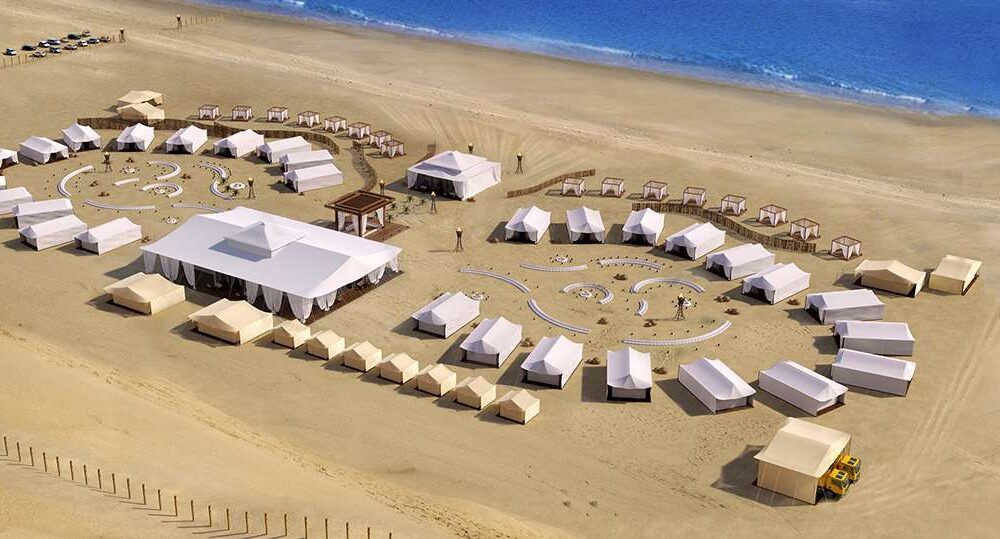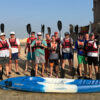 Hiking through the desert is one of the most breathtaking and challenging adventures a hiker can have. Hikers go to a place that appears to be an entirely new universe of spectacular, lunar-like scenery. In this serene emptiness, you feel at one with the sand beneath your feet and the sun above your head. And the wildlife is certainly one-of-a-kind, from the adorable creatures to the flowering cactus. Prepare for any desert trip with our comprehensive desert packing list.
Hiking through the desert is one of the most breathtaking and challenging adventures a hiker can have. Hikers go to a place that appears to be an entirely new universe of spectacular, lunar-like scenery. In this serene emptiness, you feel at one with the sand beneath your feet and the sun above your head. And the wildlife is certainly one-of-a-kind, from the adorable creatures to the flowering cactus. Prepare for any desert trip with our comprehensive desert packing list.
Camel rides, sandboarding, and stargazing are daring and fascinating activities that make deserts excellent vacation spots. Even on a short stroll or a driving journey through the desert, there are some things to remember. However, several potential dangers are lurking beneath the allure of a desert hike. Hiking in the desert is risky if you aren’t adequately equipped for it. So, without further ado, let’s get to the ultimate desert packing list.
Water
We all know a desert is a barren and desiccated land where you’ll not find any pool, spring, or water source. Going on a desert trip without water will make you dehydrated and tired. Your excitement for hiking, dune bashing, and observing nature will vanish. Ideally, you should take around 2 litres of water for a desert hiking trip, but you should always grab more in summer or depending on the weather conditions. If you intend to hike in the desert on a scorching day, water will keep you hydrated, and you’ll be glad you brought it.
Pro tip: Purchase a Camelbak water bottle. A bottle you may carry on your back while trekking so you won’t have to stop to get a drink because you’ll always have access to water using the included straw.
Sunscreen with Sun Protection Factor
Protect yourself from the glaring sun by wearing a hat, sunblock, and sunglasses. Utilising “broad-spectrum” sunscreens is advised by the EPA. You are, after all, exposing your skin to the scorching desert sun. You should bring sunscreen with a minimum SPF of 50. (Sun Protection Factor). For desert hiking, you should get sunscreen with an SPF of 70. Remember that every two hours, you should reapply sunscreen. In the desert, sunblock is practically as essential as water.
Lip Balm
While in the desert, more than just your skin will become toasty. Your lips are also sun-sensitive. We’ll give you a piece of advice to carry a lip balm. While you are out trekking during the day in the desert, this will aid in keeping your lips moisturised. Some lip balms on the market provide SPF, which shields your lips from harmful UV radiation.
Sun Hat
Purchase a hat that has a broad brim to protect your face and head. It makes no difference if you’re travelling to the Sahara Desert or another location. Your eyes and neck will be protected from the sun’s heat by wearing a hat with a wide brim.
Covering your hat is crucial because it protects you from sunstroke. Your body must work harder to keep itself cool if the sun’s rays are exposed to the top of your head.
Bandana or Cotton Scarf and Shirt
You can tie your bandana around your head, use it as a mask for your face, or even fly it as a camp flag. This simple bandana is available in various colours and would make an excellent accent for your backpack.
The sun, dust, and sandstorms won’t be able to damage your face or neck if you wrap a generous cotton scarf or bandana around your shoulders and head. Cotton is the worst fabric you can wear hiking, and any outdoor expert knows it. It doesn’t dry out quickly if it gets wet and is a poor insulator. However, this capacity to cool is helpful in the desert. In addition, your upper body will be shielded from the sun if you wear long sleeves.
Flashlight or Headlamp
Carrying a flashlight will allow you to explore the camp at your own pace. They are also helpful if you ever wake up in the early hours of the morning. With no trouble at all, you can locate anything you need within your tent. Witnessing a desert sunset from a vantage point high on a route is a truly unforgettable experience. The challenge is navigating your way back to safety once nightfall has fallen. Flashlight apps on smartphones are helpful for a short period, but a flashlight or lamp is essential when you still have several miles to travel before reaching the trailhead.
Map and Compass for Navigation
It would be simple to get disoriented in such a vast landscape. Here’sHere’s where a compass comes in handy. The only way to get out of the desert is to learn how to use one first. Even though your smartphone or GPS might be a helpful navigational aid, you shouldn’t rely on it alone. Electronics may be revived with a charging case, and a map and navigator will stay caught. Don’t wait until you’re lost to learn how to comprehend a compass and map because it requires training and practice.
Portable Power Bank or Solar Battery Charger
An on-the-go battery charger will come in handy more than ever while exploring the desert. Make sure you have a fully charged battery before using your smartphone for anything time-sensitive, such as music, mapping, messaging, images, movies, etc. Just throw this charger into your bag, and you’ll have a spare battery handy whenever you need it. Or get a solar-powered portable battery charger.
First aid kit
To learn how to save lives, you should equip yourself with a premade first aid kit or take an introductory first aid course. Without first aid, even a minor cut can quickly worsen. You should tailor your medical supplies beyond the basics based on the desert you plan to explore. One can supplement it with a snake bite kit. You should be ready for anything, from scraped knees to headaches.
Food and Snacks
Don’tDon’t forget your protein-rich dried fruits and beef jerky! To that end, feel free to bring whichever energy drinks you like. For day trips, you can get a protein bar. However, canned or dried options are better if you want to remain away from civilization for an extended period. Make sure you have all the stuff you need for your extended journey. While some hikers enjoy packing a full meal for the trip, others are content with a handful of trail mix. No matter what kind of granola bar you choose, it’s always wise to have a couple on hand, just in case. Select nutritious snacks instead of chocolate bars, which melt quickly in the desert heat, and try to limit the amount of packaging you bring along.
Final Remarks
Many adventurers get a desire to explore a desert at some point in their lives. Everyone should take at least one desert vacation during their lifetime. You might be worried about the risk, but if you follow the tips in the above desert packing list, you’ll be fine.




